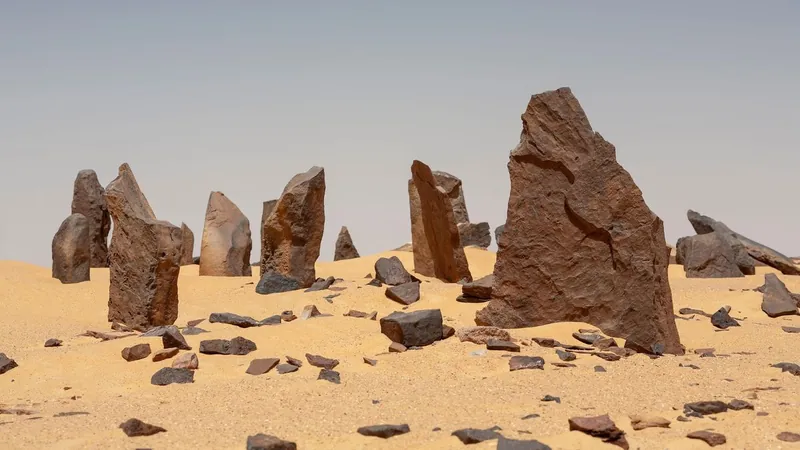
Unveiling Nabta Playa: The Ancient Stone Circle That Predates Stonehenge and May Hold Astronomical Secrets
2024-10-07
Author: Lok
Nestled in the arid expanse of southern Egypt, approximately 175 miles (280 kilometers) southwest of Aswan, lies Nabta Playa—an ancient stone circle that could potentially be the oldest known astronomical observatory in the world. Dating back around 7,500 years, it astonishingly predates the famous Stonehenge by nearly two millennia.
Once a thriving area inhabited by the ancient Nubians, this site is more than just a collection of stones; it signifies the ingenuity of early human civilization in observing the cosmos. The ensemble consists of upright stones strategically positioned in a circular formation, likely aligned to track the movements of celestial bodies—indicative of early astronomical understanding.
The arrangement includes six notable inner stones, believed to have played a role in ritualistic practices or the marking of significant celestial events, all while being encircled by 29 standing stones. Researchers speculate that these additional stones may have functioned as an early form of a calendar, aiding these prehistoric communities in navigating seasonal changes.
In a fascinating twist during excavations in 2001, the discovery of a complete cow skeleton within a central tomb revealed insights into the lives of Nabta Playa's builders. Though no human remains were found, the presence of the cattle skeleton suggests that these ancient peoples relied heavily on the herding of cattle, migrating between seasonal lakes in search of sustenance.
Significantly, researchers propose that some stones within this calendar circle may have aligned with the summer solstice—a critical event for this Stone Age society. The rising sun on this day would signal the imminent arrival of rains, crucial for replenishing the lakes that supported their pastoral lifestyle.
Today, to protect these treasures from vandalism, many of the original stones have been moved to a museum in Aswan, yet the legacy of Nabta Playa continues to inspire awe and curiosity. Its intricate design and purpose not only hint at advanced astronomical knowledge but also reflect the complex societal structures of early human communities. As we delve deeper into its mysteries, Nabta Playa may soon reveal even more secrets of our ancient ancestors and their connection to the stars.


 Brasil (PT)
Brasil (PT)
 Canada (EN)
Canada (EN)
 Chile (ES)
Chile (ES)
 España (ES)
España (ES)
 France (FR)
France (FR)
 Hong Kong (EN)
Hong Kong (EN)
 Italia (IT)
Italia (IT)
 日本 (JA)
日本 (JA)
 Magyarország (HU)
Magyarország (HU)
 Norge (NO)
Norge (NO)
 Polska (PL)
Polska (PL)
 Schweiz (DE)
Schweiz (DE)
 Singapore (EN)
Singapore (EN)
 Sverige (SV)
Sverige (SV)
 Suomi (FI)
Suomi (FI)
 Türkiye (TR)
Türkiye (TR)